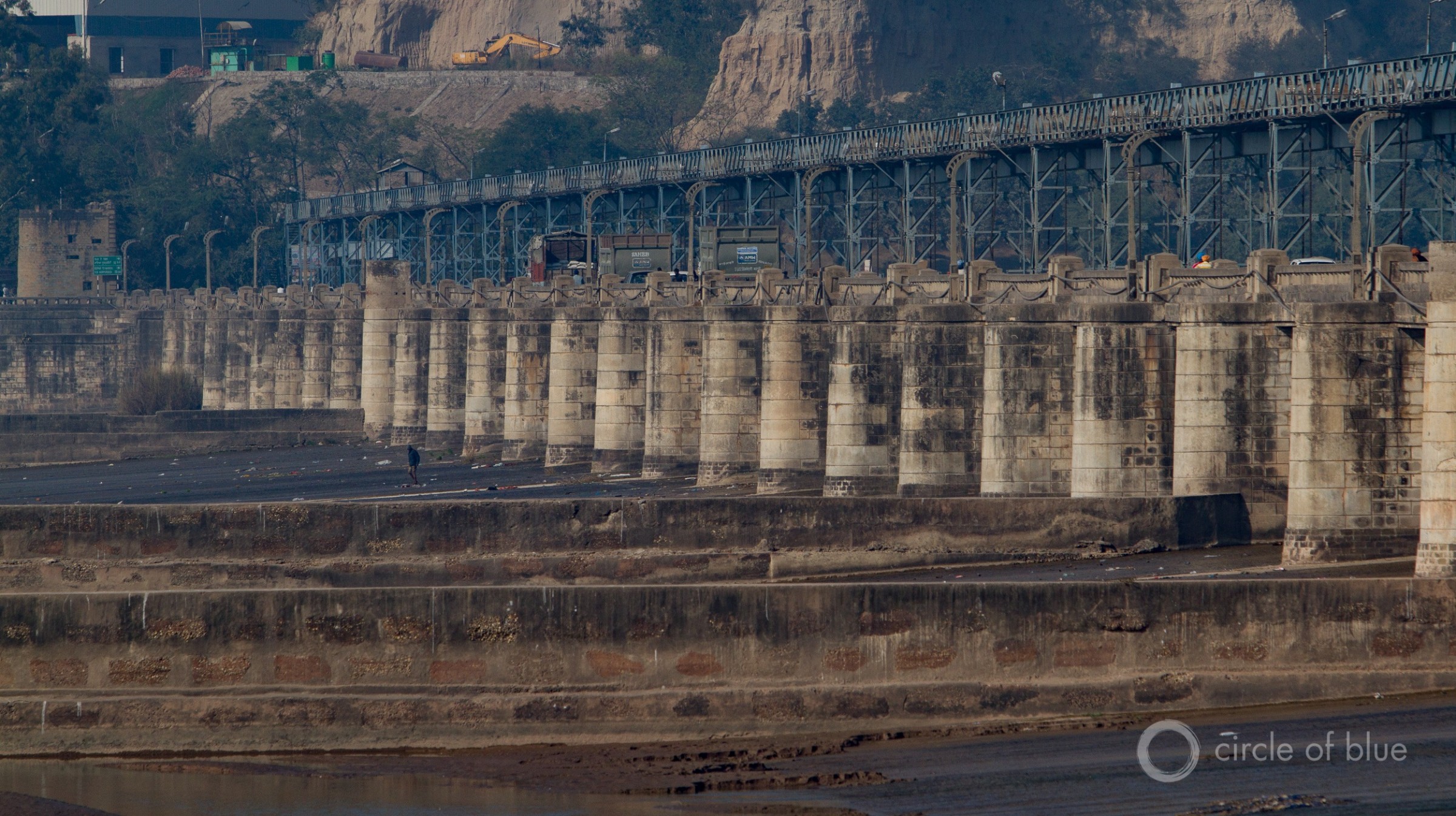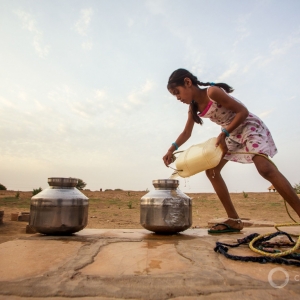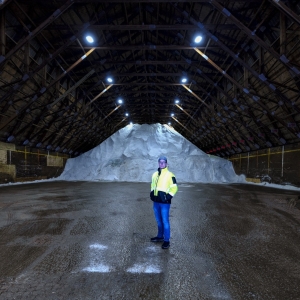The Stream, January 25, 2023: Sediment Buildup Will Shrink Reservoir Storage, UN Study Shows

In northern India between the cities of Chandigarh and Ludiana, the waters of the Sirhind Canal are held back by a dam that manages flow and floodwaters. Photo © J. Carl Ganter/Circle of Blue
YOUR GLOBAL RUNDOWN
- In Pakistan, 20 bottled water brands have been declared unsafe for people to drink due to microbial or chemical contamination.
- A new study maps, for the first time, peatland coverage in the Angolan highlands — a region that acts as a crucial carbon sink and a key regional water source.
- A new United Nations study suggests that by 2050, sediment buildup could cause thousands of the world’s largest dams to lose a combined 26 percent of their storage capacity.
- Columbia’s president vowed to block mining projects that threaten the country’s water sources.
Warm weather and little rainfall has created perfect conditions for toxic algal blooms on New Zealand’s West Coast.
“[Phormidium] occurs naturally and year round in many waterways, but when rivers are warm, with stable flows, it can grow quickly forming thick, dark mats over a large amount of a riverbed.” — Jonny Horrox, water, soil, and air quality team leader at the West Coast Regional Council.
Scientists are monitoring a toxic “blue-green” algal bloom in waterways on New Zealand’s West Coast, as warm, stagnant rivers have created perfect conditions for algal growth, Radio New Zealand reports.
The algae, a type of cyanobacteria called phormidium, occur naturally in freshwater on the West Coast. Exposure to the toxic algae poses multiple health risks, especially for young children. For dogs, phormidium can be lethal if ingested.
New Zealand’s West Coast has a vibrant fishing and whitebaiting industry. As recently as last September, the government issued warnings to fishermen because shellfish in the area had been exposed to algal biotoxins, and were dangerous to eat. Those warnings have centered on the Bay of Plenty and surrounding lakes.
In context: Toxic Algae Blooms — Symptoms of a System out of Balance
— Christian Thorsberg, Interim Stream Editor
Recent WaterNews from Circle of Blue
- Federal Government Advances Big Water Projects — Congress focuses on flood protection and disaster recovery.
- New Mexico Town, Still Reeling from Historic Fire, Receives Federal Aid to Repair Drinking Water System — The town of Las Vegas is eligible for up to $140 million for drinking water treatment facilities.
The Lead
A new study forecasts that by 2050, thousands of dams worldwide will lose, cumulatively, close to 26 percent of their water storage capacity, The Guardian reports.
Overall, the study from the United Nations University Institute for Water, Environment and Health estimates that 1.65 billion cubic meters of storage — “roughly equal to the combined annual water use of India, China, Indonesia, France and Canada” — will be lost to sediment. Rivers carry sediment into reservoirs. When sediment accumulates it can block water inflow and cause downstream flooding. This hurts communities that depend on these waterways and reservoirs for energy, irrigation, and water supply. Traditional sediment removal techniques are usually difficult, costly, or both.
In all, the report considered nearly 50,000 dams globally. The United Kingdom, Panama, Ireland, Japan, and Seychelles were estimated to be the most affected — their dams losing up to 50 percent of water capacity by 2050 — while Bhutan, Cambodia, Ethiopia, Guinea, and Niger were seen to be the least affected, losing only 15 percent capacity. Currently, the total global water capacity lost to sedimentation is at 16 percent, according to the report.
The report also lists possible sedimentation solutions. The creation of bypass tunnels — a more environmentally-friendly way to divert water flow downstream — is “gaining traction.” Meanwhile dredging, sediment flushing, and increasing dam height remain other options, with varying pros and cons.
In context: ‘Mass Aging’ of Dams a Global Safety and Financial Risk, UN Report Says
This Week’s Top Water Stories, Told In Numbers
20
Brands of bottled water, sold between October and December 2022, that Pakistan’s government declared “unsafe” after microbial and chemical testing, the Pakistani newspaper Dawn reports. The government continues its quarterly tests of nearly 170 brands, as “the poor quality of drinking water has forced a large cross-section of citizens to buy bottled water,” according to the Pakistan Council for Research in Water Resources. Of the 20 brands flagged last month, seven were found to have microbiological contamination; 12 brands were chemically contaminated, most often with high sodium; and one brand was flagged with both. Twenty brands is up from the previous quarter’s 17, though an improvement upon 2022’s second quarter, when 26 brands were declared unsafe. As of 2017, only 20 percent of Pakistan’s population has access to safe drinking water.
1,634
Square kilometers of peatlands, measured and mapped for the first time ever, in Angola. This area is equivalent to 230,000 soccer fields, according to the new study, which is explained further by its author in The Conversation. The global tracking and mapping of peatlands, which “store more carbon than all the world’s forests combined,” has been relatively incomplete and under-the-radar until recently. Knowing global peatland coverage is essential for carbon measurements, and precise mapping has important regional benefits. According to the study, these peatlands are the primary water source for the Okavango Delta, a UNESCO world heritage site in northwest Botswana. There may be even more unmapped peatlands in Angola — the study observed only 16 percent of the highlands region, and 4 percent of the country in total.
On the Radar
Colombia’s president Gustavo Petro said last week that he would block proposed mining projects that threatened water sources within the country, Mining.com reports. The announcement coincided with the president’s trip to the municipality of Jericó, the location of one of three AngloGold Ashanti mining projects, which are in various stages of development and planning. Petro took office last August with “clear positions” against mining and fracking expansion in favor of clean energy, Bloomberg Línea reports.
More Water News
Hammams — Morocco World News reports that, amid nationwide water shortages, the country has launched a campaign to raise public awareness of water conservation in 400 hammams, traditional bath houses, across major cities.
Frozen rivers — In Alaska, tribes are resisting climate change and unseasonal weather to maintain “ice roads” — frozen rivers which are driven on during the winter, High Country News reports.
Christian Thorsberg is an environmental writer from Chicago. He is passionate about climate and cultural phenomena that often appear slow or invisible, and he examines these themes in his journalism, poetry, and fiction.






Leave a Reply
Want to join the discussion?Feel free to contribute!